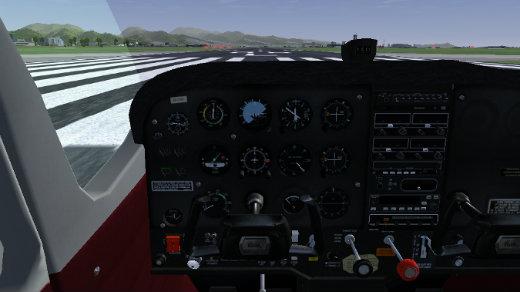

- #FLIGHTGEAR COMMAND LINE HOW TO#
- #FLIGHTGEAR COMMAND LINE FULL#
- #FLIGHTGEAR COMMAND LINE MAC#
- #FLIGHTGEAR COMMAND LINE WINDOWS#
fgfsrc (DOTfgfsrc) on linux and MAC and called system.fgfsrc on windows. Those files are called resource files and have names like. The preferences.xml is in a folder typcially considered 'read only' You can, of course, do this as you are doing, but there are files that are meant to do the configuration of start up. Usually we don't make these kinds of selections of aircraft or scenery in the preferences file. Since you are not using a launcher, but are using the command line then you have to set the path. When using launchers the path is given by the launcher to executable fgfs. $"pathToFGBin"\>fgfs -FG-ROOT=C:\Program Files\FlightGear 3.5.0\data You have to give FGFS.exe your path to fgdata using a switch that looks like this on the command line. For historical reasons the fgfs log file is not (as many folk believe) the same as the log printed in the console window.FGFS can not start unless it knows where it's files are. Also it was not possible to pipe output to a file from the window that was opened by the fgfs -console method. It was discovered that error reports were not being sent to a console window that was opened with the -console option. fgfs) is started typing a command at the prompt.
#FLIGHTGEAR COMMAND LINE WINDOWS#
running fgfs -console) is not the same as a native windows command window from which an application (e.g. The reason is that a console window opened by an application (e.g. The reason for changing to this system and getting rid of the old -console option, was to make the error reporting (STDERR) work properly. Īll of the flightgear and fgrun log messages will now apear in the "DOS" window. You can also start flightgear using the command fgrun in this "DOS" box, or you can start with the newlauncher with the comand fgfs -launcher.fgfsrc file needs to be disabled (I move it to another directory) when you use the launcher. fgfsrs options conflict badly with the new launcher, and the. fgfsrc file as described in the main documentation. Type the command fgfs, followed by any of the normal fgfs arguments, such as -aircraft, -airport., and flightgear will run.Typing the Dir command will show other programs, such as fgrun, that are contained in this directory. The directory will be the one containg fgfs.exe. A black windows command box will open (still known by many as the DOS command window).Wih the left mouse button held down select "Open command prompt". Left click the File tab on the window showing the fgfs directory.This is a simple way to open the folder that contails fgfs.exe. Right-click the FGFS desktop icon and select "open file location".To do this open the folder that contains fgfs.exe and right-click drag fgfs to the desktop. Make a shortcut to FGFS on the desktop.If you already have fgfs as a desktop icon, steps 2 and 3 speed things up a lot. I will detail all of the steps to help those who are not familiar with Windows and the command line.
#FLIGHTGEAR COMMAND LINE FULL#
The full method that I use is as follows. To show the console it is now necessary to start from the command line. Note This article needs a few screenshots Running from a batch file (unless one puts a "press any button to continue" trap at the end of the batch file) closes the window, and you don´t know what lead to the crash. Running flightgear from an already open command window has one small advantage - when flightgear exits (or crashes) the command window, complete with the log messages, stays open.
#FLIGHTGEAR COMMAND LINE HOW TO#
This article will show how to show the FlightGear console on Windows. However, some users may still want the console to debug errors, etc. In FlightGear 2016.3, the console and -console option were removed. See also Howto:Understand console output.


 0 kommentar(er)
0 kommentar(er)
